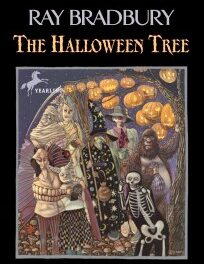We support our Publishers and Content Creators. You can view this story on their website by CLICKING HERE.
Much as Evelyn Waugh insisted that the theme of “Brideshead Revisited” was “the operation of divine grace”, J.R.R. Tolkien insisted in a letter to a friend that “’The Lord of the Rings’ is, of course, a fundamentally religious and Catholic work.”
 In the fourth and final essay in this survey of liturgy and literature we will focus on two great novels, one of which is rightly considered a classic and the other of which is largely unknown, and then will conclude with Tolkien’s great prose epic, The Lord of the Rings.
In the fourth and final essay in this survey of liturgy and literature we will focus on two great novels, one of which is rightly considered a classic and the other of which is largely unknown, and then will conclude with Tolkien’s great prose epic, The Lord of the Rings.
Evelyn Waugh wrote in the preface to the second edition of his greatest novel, Brideshead Revisited, that its theme was “the operation of divine grace on a group of diverse but closely connected characters”. He added that such a theme “was perhaps presumptuously large, but I make no apology for it”. If Waugh’s authorial authority is to be respected, we must read Brideshead Revisited with the eyes of faith.
The first indication that the novel must be read spiritually is its title. The “bride’s head” is the bridegroom, indicating that Brideshead, the stately home of the aristocratic Flyte family, serves in some sense as a metaphor for Christ who describes himself metaphorically and parabolically as the bridegroom. Brideshead can also be seen as representing the Church in the sense that the Church, as the Bride of Christ, is also united with Him in the “one flesh” as the Mystical Body of Christ. This dimension is most evident when Charles Ryder, upon leaving Brideshead for what he believes will be the last time, declares that he has left behind illusion, referring to the Catholicism of the family and household from which he is departing. Henceforth, he will believe only in three dimensions as experienced by his five senses.
The “operation of divine grace” in the novel is made manifest through the presence of suffering, expressed metaphorically as “the twitch upon the thread”, which indicates the sinner being caught by the hook of the fisherman, and also by the devastating effects of the “avalanche” that demolishes the comfort zone that the sinners had erected to protect them from the “coldness” of life.
The specifically liturgical dimension is to be seen in the way in which the first half of the novel ends metaphorically on Good Friday whereas the novel concludes metaphorically on Easter Sunday. This is symbolized by the deconsecration of the chapel at Brideshead and the removal of the Blessed Sacrament from the tabernacle. Sitting in the back of the chapel, observing the removal of the sacramental Christ from the heart of Brideshead, is Cordelia, the youngest of the Flyte children: “[The priest] emptied the holy water stoup and blew out the lamp in the sanctuary and left the tabernacle open and empty,” Cordelia tells Charles, “as though from now on it was always to be Good Friday. . . . I stayed there till he was gone, and then, suddenly, there wasn’t any chapel there any more, just an oddly decorated room.” At the end of the novel, when Charles revisits Brideshead, he discovers that the Blessed Sacrament has been restored to the tabernacle and he kneels in prayer. Christ has risen from the dead and, by “the operation of divine grace”, so has the recently converted Charles.
Whereas Brideshead Revisited has been “canonized” as one of the truly great novels of the twentieth century, The Mass of Brother Michel, published in 1942, three years before Waugh’s classic, is largely unknown. Since I reviewed this novel recently for The Imaginative Conservative, I will simply quote what I said then that Brother Michel “develops a deep devotional and self-sacrificial love for the holy sacrifice of the Mass and for the eucharistic presence of the Lord. It is this love which takes centre stage, or perhaps it would be better to say that it is the high altar that takes centre stage.” The Mass of Brother Michel is more than merely a novel; it is a love song to the greatest love song ever written, the Passion of Christ as re-presented in the holy sacrifice of the Mass, which was defined allusively and elusively by Shakespeare as “the perfect ceremony of love’s right”.
We will conclude our tour of the liturgical presence in the world of literature with an excursion to another world entirely.
Much as Waugh had insisted in his preface to the second edition of Brideshead Revisited that its theme was “the operation of divine grace”, Tolkien had insisted in a letter to a friend that “The Lord of the Rings is, of course, a fundamentally religious and Catholic work”. This religious dimension is made manifest in manifold ways, not least of which are the liturgical signifiers that Tolkien embeds within the narrative.
The Ring is destroyed on March 25, which is not merely the date of the Annunciation but also, according to tradition, the historical date on which Christ was crucified. The date, therefore, which Tolkien chooses for the destruction of the Ring connects the Ring’s destruction with the Incarnation and the Crucifixion. The power of the Ring is destroyed on the same date on which the power of sin is destroyed. Original Sin, the one sin to rule them all and in the darkness bind them, is united to the power of the Ring as the One Ring to rule them all and in the darkness bind them. The power of the One Sin and the power of the One Ring are both destroyed on the same liturgically significant date. Equally significantly, Frodo Baggins leaves Rivendell on December 25, making his journey from Rivendell to Mount Doom (Golgotha) an allusion to the life of Christ from his birth to his death.
Tolkien, a medieval scholar immersed in the literature of the Middle Ages, was inspired, no doubt, to employ these liturgically significant dates by the similar use of such liturgical signifiers in Dante’s Divine Comedy and in the Arthurian romance, Sir Gawain and the Green Knight, the latter of which he had translated into modern English. As a lover of liturgical and literary tradition, Tolkien was inspired to write a modern epic which is one of the greatest fruits of what he called “the Tree of Tales”. On this edifying note, we’ll end this series in which we’ve picked some of the beautiful fruits that this tree has produced over the centuries.
The Imaginative Conservative applies the principle of appreciation to the discussion of culture and politics—we approach dialogue with magnanimity rather than with mere civility. Will you help us remain a refreshing oasis in the increasingly contentious arena of modern discourse? Please consider donating now.
The featured image is courtesy of Pixabay.
Share This Story, Choose Your Platform!
Go to Top

 Conservative
Conservative  Search
Search Trending
Trending Current News
Current News 




